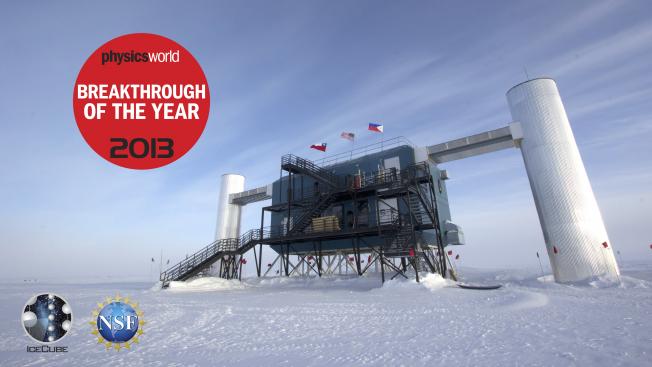Search for Quantum Gravity Using Astrophysical Neutrino Flavour with IceCube
(2021)
Explaining cosmic ray antimatter with secondaries from old supernova remnants
Physical Review D American Physical Society 104:10 (2021) 103029
Abstract:
Despite significant efforts over the past decade, the origin of the cosmic ray positron excess has still not been unambiguously established. A popular class of candidate sources are pulsars or pulsar wind nebulae but these cannot also account for the observed hard spectrum of cosmic ray antiprotons. We revisit the alternative possibility that the observed high-energy positrons are secondaries created by spallation in supernova remnants during the diffusive shock acceleration of the primary cosmic rays, which are further accelerated by the same shocks. The resulting source spectrum of positrons at high energies is then naturally harder than that of the primaries, as is the spectrum of other secondaries such as antiprotons. We present the first comprehensive investigation of the full parameter space of this model—both the source parameters as well as those governing galactic transport. Various parametrizations of the cross sections for the production of positrons and antiprotons are considered, and the uncertainty in the model parameters discussed. We obtain an excellent fit to recent precision measurements by AMS-02 of cosmic ray protons, helium, positrons, and antiprotons, as well as of various primary and secondary nuclei. This model thus provides an economical explanation of the spectra of all secondary species—from a single well-motivated population of sources.Suppression of pair beam instabilities in a laboratory analogue of blazar pair cascades
Proceedings of the National Academy of Sciences National Academy of Sciences 122:45 (2025) e2513365122
Abstract:
The generation of dense electron-positron pair beams in the laboratory can enable direct tests of theoretical models of γ-ray bursts and active galactic nuclei. We have successfully achieved this using ultrarelativistic protons accelerated by the Super Proton Synchrotron at (CERN). In the first application of this experimental platform, the stability of the pair beam is studied as it propagates through a meter-length plasma, analogous to TeV γ-ray-induced pair cascades in the intergalactic medium. It has been argued that pair beam instabilities disrupt the cascade, thus accounting for the observed lack of reprocessed GeV emission from TeV blazars. If true, this would remove the need for a moderate strength intergalactic magnetic field to explain the observations. We find that the pair beam instability is suppressed if the beam is not perfectly collimated or monochromatic, hence the lower limit to the intergalactic magnetic field inferred from γ-ray observations of blazars is robust.Measurement of the mean number of muons with energies above 500 GeV in air showers detected with the IceCube Neutrino Observatory
Physical Review D American Physical Society (APS) 112:8 (2025) 082004
Abstract:
We present a measurement of the mean number of muons with energies larger than 500 GeV in near-vertical extensive air showers initiated by cosmic rays with primary energies between 2.5 and 100 PeV. The measurement is based on events detected in coincidence between the surface and in-ice detectors of the IceCube Neutrino Observatory. Air showers are recorded on the surface by IceTop, while a bundle of high-energy muons (TeV muons) from the shower can subsequently produce a tracklike event in the IceCube in-ice array. Results are obtained assuming the hadronic interaction models Sibyll 2.1, QGSJet-II.04, and EPOS-LHC. The measured number of TeV muons is found to be in agreement with predictions from air-shower simulations. The results have also been compared to a measurement of low-energy muons by IceTop, indicating an inconsistency between the predictions for low- and high-energy muons in simulations based on the EPOS-LHC model.QSHS: an axion dark matter resonant search apparatus
New Journal of Physics IOP Publishing 27:10 (2025) 105002



